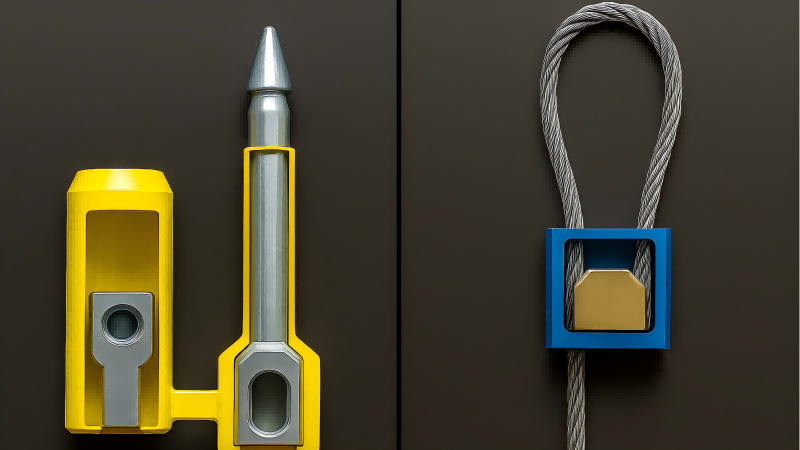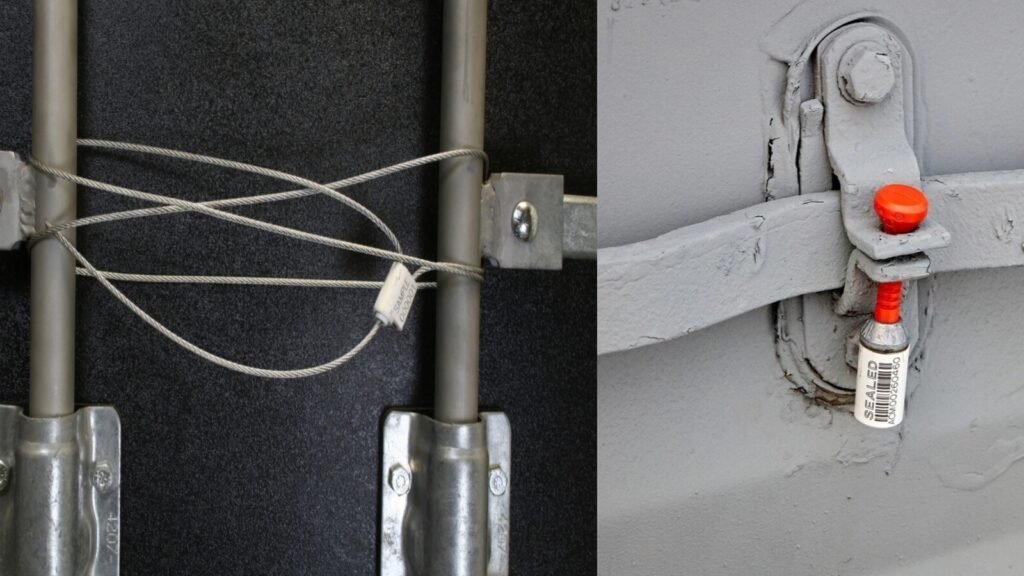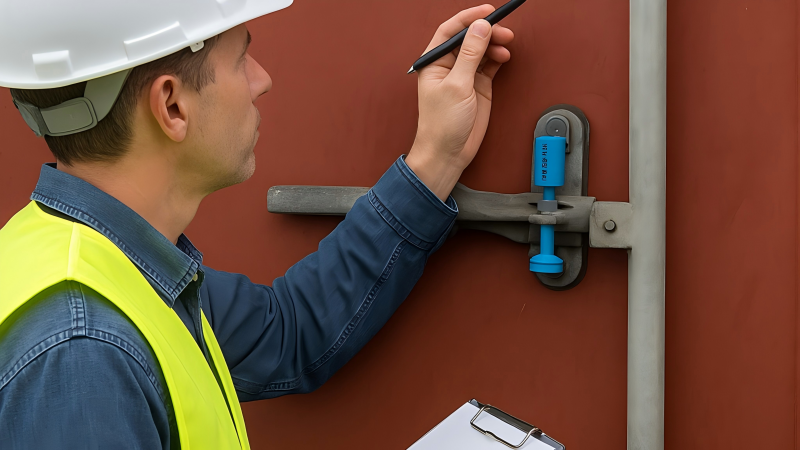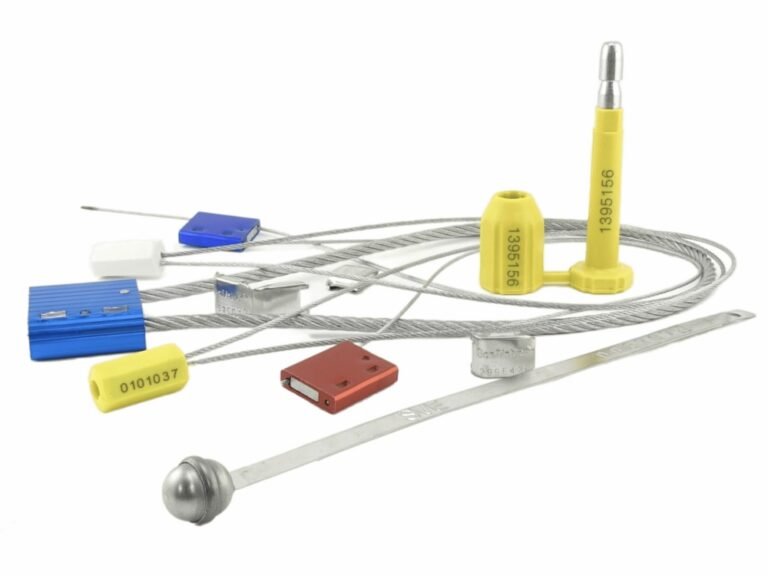You're about to secure a multi-million dollar shipment, and you pause, seal in hand. Should you use the rigid bolt seal or the flexible cable seal? Choosing incorrectly isn't just a minor mistake; it can compromise your entire shipment, leading to theft, tampering, and costly delays.
The choice is a diagnostic, not a preference. For a standard container latch, the bolt seal is your specialist tool. For anything damaged, irregular, or needing to be bundled together, the versatile cable seal is the correct choice. Your locking point dictates the right tool for the job.

Choosing between a bolt seal and a cable seal is not a question of "good vs. bad." It’s an application diagnosis of "rigid locking vs. flexible bundling." I always tell my clients to think of it this way: the bolt seal is a bank vault's deadbolt. The cable seal is an industrial ratchet strap made of steel. One provides immovable strength in a fixed point; the other provides adaptable strength to bundle and tighten. Your job is to diagnose the situation and pick the right tool.
How Do Bolt Seals and Cable Seals Fundamentally Differ?
They both look like strong metal locks, but what's the real difference in their design and purpose?
The fundamental difference is their core function. A bolt seal is a two-part, rigid system designed for a single, fixed-size locking point. A cable seal is a one-piece, pull-tight system that can adapt to variable distances and shapes.

After 15 years in this business, explaining this core difference clears up most of the confusion. One is a fixed solution, the other is an adaptable one. This dictates everything about how and when they should be used. Here's a direct comparison using the analogy:
| Feature | Bolt Seal (The "Deadbolt") | Cable Seal (The "Ratchet Strap") |
|---|---|---|
| Core Function | Rigid, Single-Point Locking. | Flexible Bundling and Cinching. |
| Construction | Two separate, rigid parts: a steel pin and a distinct locking barrel. | A single integrated unit: a steel cable permanently fixed to a locking body. |
| Locking Mechanism | The pin audibly clicks into the barrel, locking at a fixed position. | The cable pulls through a one-way clutch, allowing it to be cinched tight. |
| Primary Strength | Unmovable, rigid strength in a standard, perfectly aligned hole. | Adaptability to misaligned holes, irregular shapes, and multiple points. |
This table is your basic diagnostic tool. The nature of your locking point will immediately point to one of these columns.
Which Seal Offers Greater Strength and Security Against Tampering?
It's the question every buyer asks: Which one is tougher? Which one is more secure?
Both high-quality bolt seals and cable seals can achieve the "H" (High Security) classification under ISO 17712. This means they offer a comparable, top-tier level of security and are accepted for C-TPAT shipments. They are simply designed to defeat different kinds of attacks.

As someone who began their career in Quality Control, I've seen thousands of seals tested to destruction. When compliant with the ISO standard, neither is "weaker." Their security is just expressed differently.
How They Defend Your Cargo:
- Bolt Seal Security (The Deadbolt): Its strength is in resisting brute force pulling and rotational attacks. A critical feature of a true high-security bolt seal is an anti-spin mechanism. This means the pin and barrel lock together (often with a square or hexagonal shape) so a thief cannot simply attach a drill and spin the seal open. It’s designed for immovable, rigid security.
- Cable Seal Security (The Ratchet Strap): Its security lies in its extreme tamper-evidence. Once the steel cable (which must be 3.5 mm or thicker for an "H" rating) is cut, the braided wires instantly fray and unravel. It is physically impossible to cut and then rejoin the cable without leaving glaring evidence. This makes any attempt at tampering immediately obvious.
When Should I Use a Bolt Seal vs. When is a Cable Seal the Better Choice?
Now for the practical diagnosis. When do you reach for the Deadbolt, and when do you need the Ratchet Strap?
Use a bolt seal for standard, undamaged intermodal container doors. Use a cable seal for trucks, rail cars, damaged containers, or any situation where the locking points are misaligned or require bundling together.

This is where you apply the diagnostic tool. I guide my clients through this simple logic:
Reach for the "Deadbolt" (Bolt Seal) when:
- You are sealing a standard ISO shipping container.
- The door's hasps and keepers are undamaged and perfectly aligned.
- You need to secure a single, standard-sized hole.
- Diagnosis: The locking point is standard. The job requires a single point of rigid locking.
Reach for the "Ratchet Strap" (Cable Seal) when:
- Damaged Container: The seal hasp on a container door is broken or bent. A cable seal can be looped through the keeper and around the locking bar to secure it.
- Trucks & Trailers: You are securing swing doors or roll-up doors on a trailer. A cable seal can be cinched tight around the door latches.
- Rail Cars & Valves: You need to lock valves or hatches on a tanker or hopper car, where a rigid bolt seal simply won't fit.
- Multiple Locking Points: You need to secure two separate, but close, locking points together.
- Diagnosis: The locking point is non-standard, damaged, or requires bundling. The job requires flexibility and the ability to cinch tight.
Why is ISO 17712 Compliance So Critical for International Shipments?
You've picked the right type of seal. Does it matter if it's a cheap version from an unknown supplier?
Absolutely. Using a non-compliant seal is like using a stage prop for a real lock. ISO 17712 is the global standard that guarantees a seal's strength and the integrity of its manufacturing process. For secure trade initiatives like C-TPAT, using a certified "H" class seal is a non-negotiable requirement.

I have fielded too many calls from clients whose containers are stuck at a port, racking up thousands in demurrage fees, all because a customs officer flagged a non-compliant seal. That "H" certification is your proof that:
- The Seal is Tough: It has passed independent mechanical tests for pull, shear, and impact force at an ISO 17025 accredited lab.
- The Manufacturer is Secure: The supplier's security processes have been audited (known as Clause 6) to prevent internal theft or unauthorized duplication.
A cheap seal is just metal and plastic. A compliant seal is a key that unlocks smooth passage through the global supply chain.
Is Choosing the Right Type of Seal Enough to Guarantee My Cargo's Safety?
You've diagnosed the situation and used the perfect, ISO-compliant seal. Is your job done?
No. The seal is just one crucial link in a longer "Chain of Integrity." A $10 high-security seal is worthless if the container wall has a hole in it, or if your sealing process itself is flawed.

This is the ultimate lesson for every shipper. The seal can't do the job alone. True cargo security is a process:
- Step 1: Container Inspection: Check the container's physical structure before you load a single box.
- Step 2: Access Control: Control who has access to your cargo and your seals.
- Step 3: Proper Application: Use the correct seal for the job and verify it is locked (View, Verify, Tug, Twist).
- Step 4: Documentation: Record the seal number accurately on the Bill of Lading.
- Step 5: Verified Removal: Inspect the seal for tampering upon arrival before cutting it.
The seal is the focal point, but the entire process is what creates true security.
Conclusion
Stop treating seal selection as a choice. Treat it as a diagnosis. Is your locking point a standard, single hole? Use the "Deadbolt" (Bolt Seal). Is it complex or damaged? Use the "Ratchet Strap" (Cable Seal). This simple tool will ensure you make the right call every time.
Get the Right Diagnostic Tools for Your Security
Feeling unsure about your diagnosis? At ProtegoSeal, we provide more than just seals; we provide the expertise to ensure you have the right tool for the job. We'll help you build a security process that's both compliant and highly effective. Contact us today for a professional security consultation.

